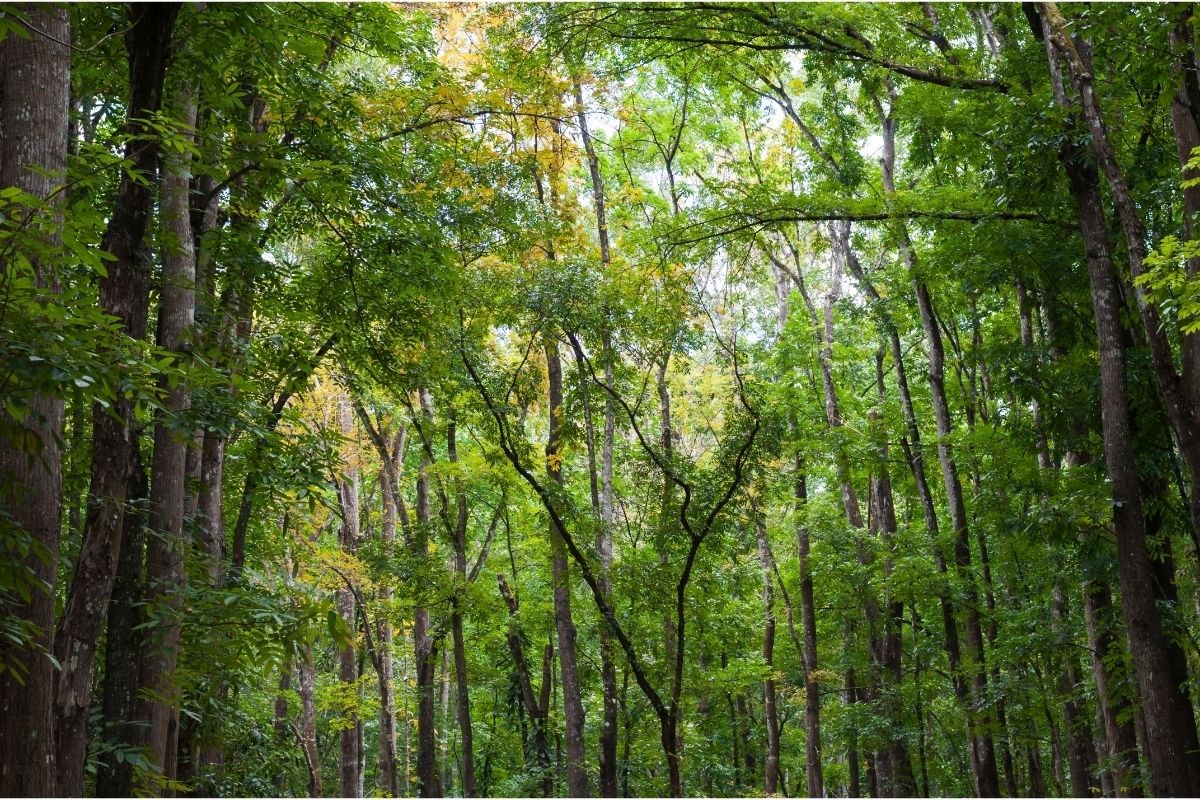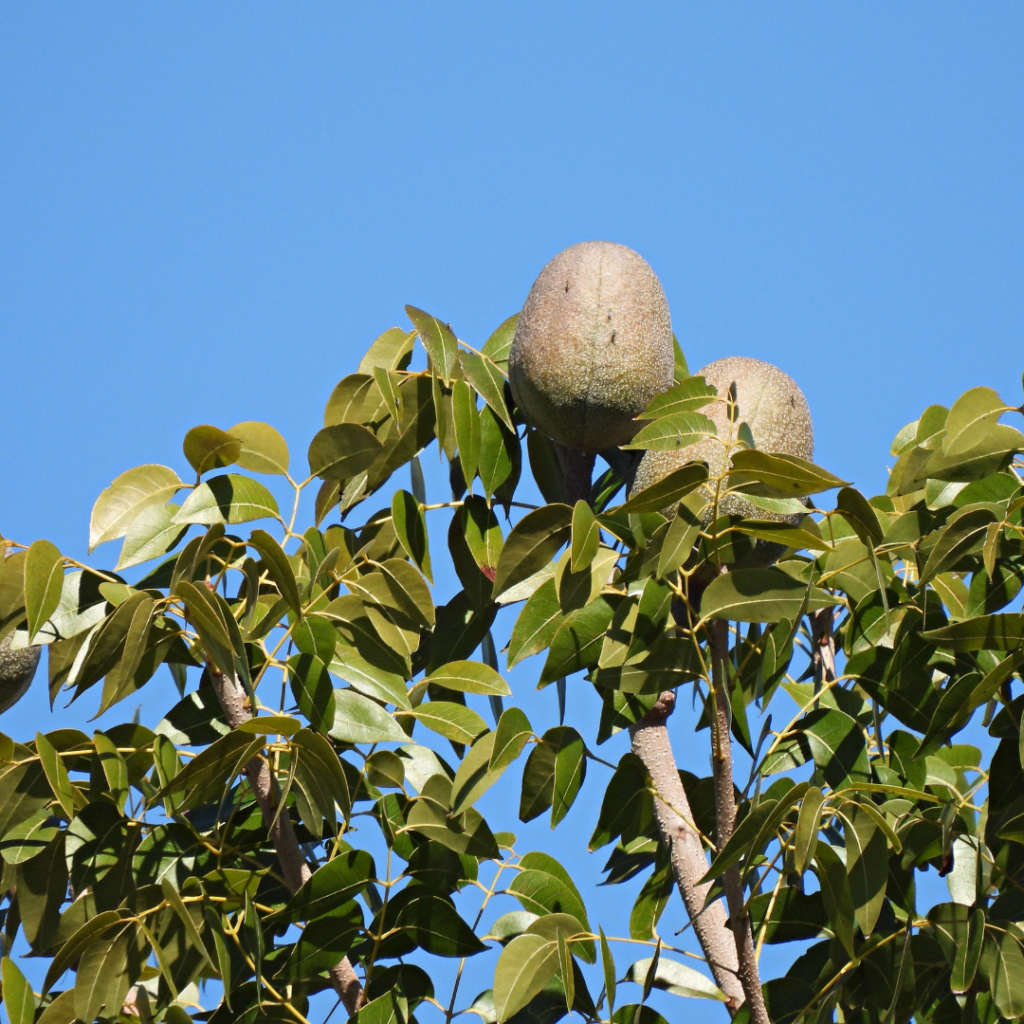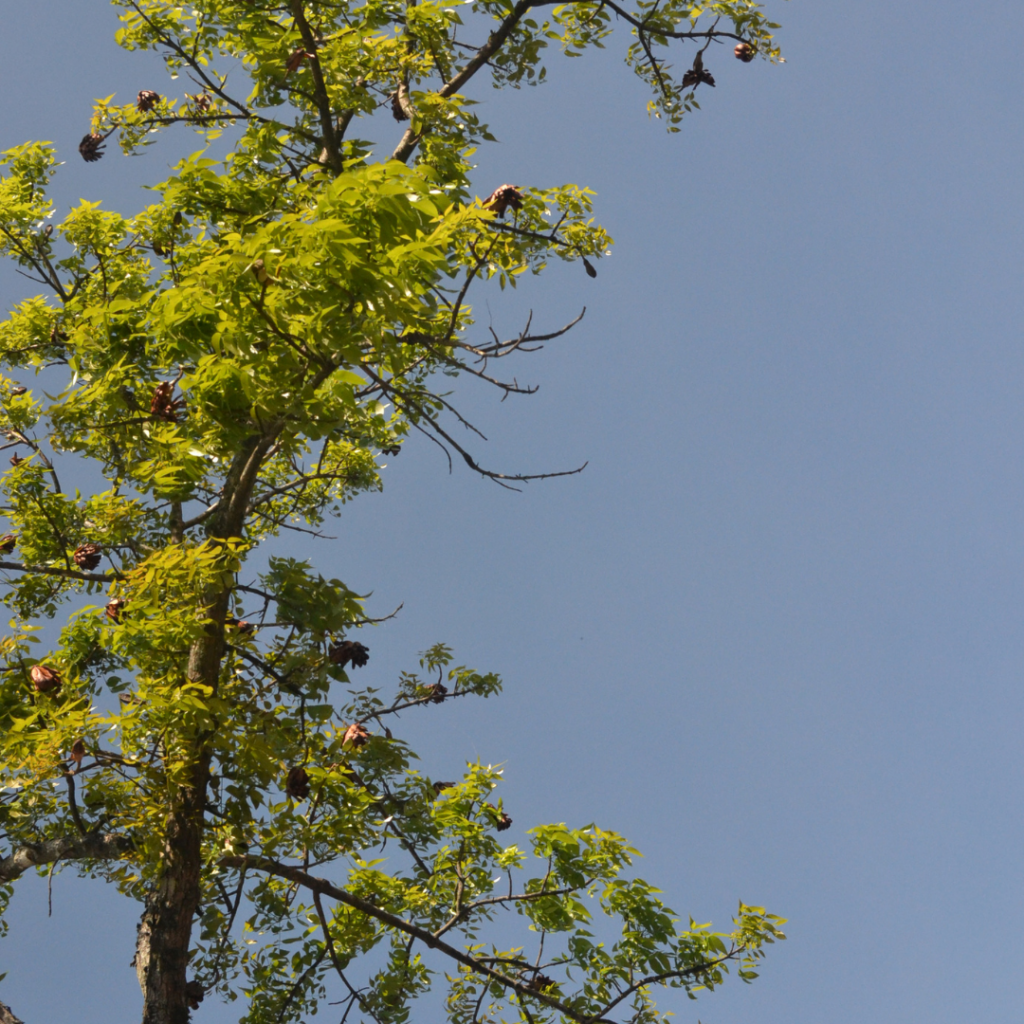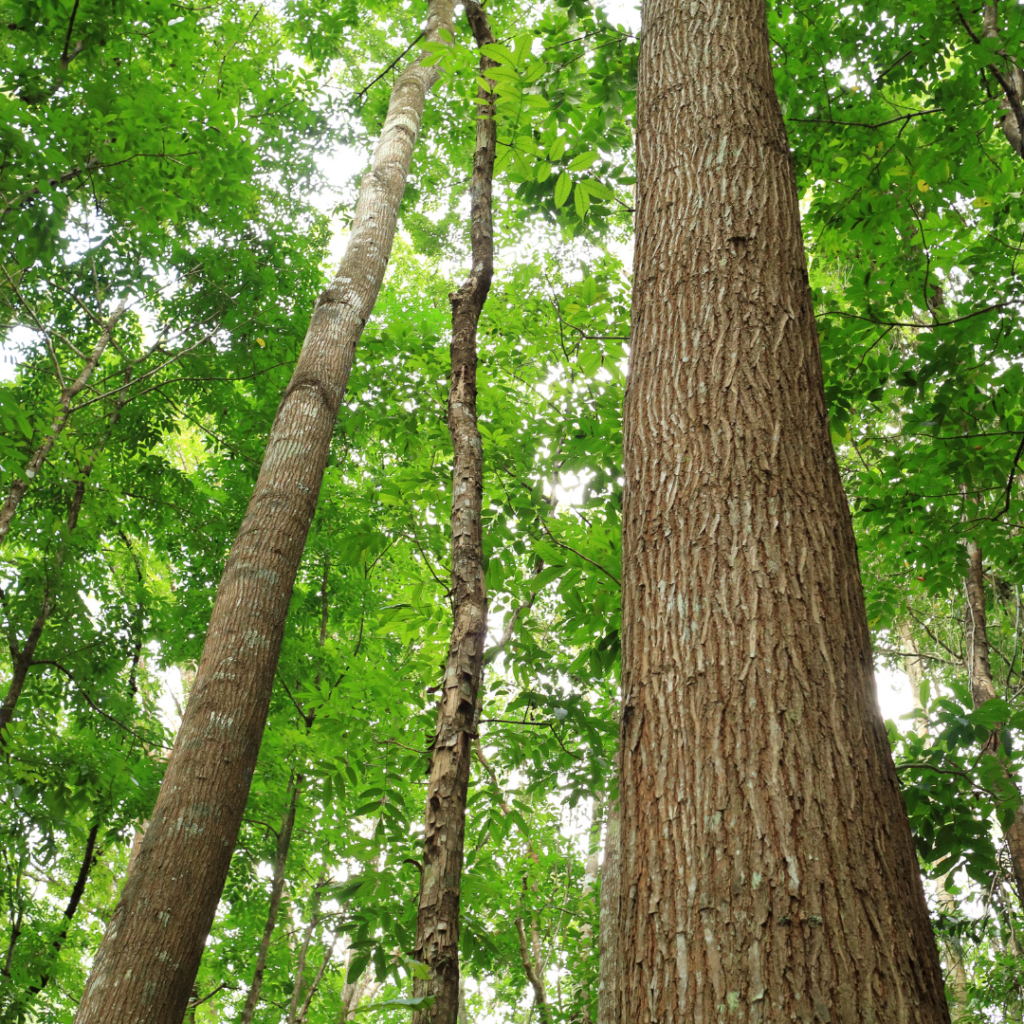Mahogany Trees is a type of wood that many of us may have heard of before but I bet you don’t know much about the actual plant and tree that mahogany comes from.

Let’s explore this tree that has the potential to be more than just a material resource.
Mahogany is the name for the timber you receive from the three tropical hardwood species of the Swietenia genus.
All three species are indigenous to the Americas. Swietenia is part of the chinaberry family of trees.
Depending on the species, the trees can reach 20-45 m high and around 6.6 ft diameter of the trunk.
The foliage is often quite small in comparison to the tree. Some species are deciduous or semi-evergreen – new foliage grows quickly after older foliage dies off.
While Mahogany trees are mainly known and sought after for their timber, the Swietenia also produces fruit and flowers.
Each flower has five petals that can be green or yellowish commonly. From the flower, pear-like fruit can grow that have valves like a pomegranate containing seeds.
Yet, as we mentioned, the Mahogany trade has had a serious effect on the trees. Mahogany is a straight-grained red/brown timber, Mahogany can be from any of the three species of Swietenia.
RELATED: 10 Different Types Of Indian Trees
Mahogany is particularly durable and has a dark color that many people enjoy. The largest importer of Mahogany is the US, while the largest exporter is Peru.
A serious problem with the Mahogany trade is that it is estimated that around 80-90% of the mahogany exported from Peru is from illegal loggers.
It is estimated that around 57000 mahogany trees were harvested to supply the US furniture trade in 2000.
While mahogany is prized for its natural beauty, our aesthetics are starting to affect the plant’s conservation and population strength.
1. Swietenia Macrophylla

This is one of the three genera that can produce what is known as genuine mahogany which is the most prized of all timber.
The tree is generally native to the South Americas but has also been naturalized in other areas such as Asia and Hawaii in order to produce it more easily.
This specific species is known as ‘big leaf mahogany’ and alludes to the species leaves that remain pretty big for this genus.
They are around 17-18 inches long. Did you know that the seeds of this plant can reach up to 5 inches?
One interesting thing about this species is the fruit. The fruit is known locally and colloquially as ‘sky fruit’ as it points upwards from the branch rather than drooping downwards, resisting gravity.
A concentrate of this ‘sky fruit’ is used to improve blood circulation around the body, and some even suggest it can be used like Viagra for erectile dysfunction.
Beyond the hermetic medicine of the species ‘sky fruit’, there is a lot of genuine medical research into the species potential medicinal usage.
Studies on the seeds show it has many desirable properties for potentially treating cancer.
It’s reported that Swietenia macrophylla seeds possess anti-inflammatory properties concerning cells, and advocate the use of the tree’s seeds as a nutraceutical for the intervention of neurodegenerative diseases and neuroinflammatory disorders.
Yet, adding to the tree’s interest, these seeds that have such medicinal potential are also known to cause some liver damage when overconsumed.
Raw seeds are safe to eat up to 325 mg/kg per body weight. This shows that the tree which is already popular for its lumber has many other potential benefits to humans, meaning we should push for conservation even more.
This species conservation status is currently considered threatened and vulnerable.
2. Swietenia Humilis

The main outstanding feature of the tree that differentiates it from the other two species considered to be ‘genuine mahogany’ is that this tree is much smaller than the other two.
The tree grows to a mere 20 feet in height, following its name as ‘humilis’ means dwarfish. It can be quite rare to find a specimen larger than expected.
This species often grows in the drier areas of the Southern Hemisphere, particularly and historically along the western area of the Sierra Madre mountain range.
As a result, there are specimens of this species that have been found at altitudes as high as 3900 feet.
However, due to overfarming and exploitation, the species has been scattered and isolated and the natural distribution has reduced a lot.
As a result of overfarming for genuine mahogany, the is considered to be an endangered species, meaning its population is actively in decline.
Moreover, these three species typically hybridize when grown together so true genetics of this species are equally hard to find.
Again, this species has some interesting medicinal as well as toxic properties. Both the seeds and bark of the Swietenia humilis are poisonous against some larvae that live within the tree’s bark.
Although not toxic to humans, the seeds are made into a concentrate that is used to treat chest coughs and spins as well as cancer, showing to have anthelmintic properties.
As a result, there have been tests and studies on the seed since the 1990s, which only becomes harder as the tree’s population decreases.
Moreover, the oil that can be extracted from the seeds could potentially be used as an oil for culinary use that is similar to avocado oil – the seed germ can yield around 45% of edible oil by mass.
For many of these reasons the tree is considered endangered, conservation should be paramount to these studies before they continue any more tests.
3. Swietenia Mahagoni

This is what people consider to be ‘the original mahogany’. The first records of this tree date back to 1514 when it was used for a crucifix in a church in Santo Domingo.
Around the same period, the species was favored greatly as ship-building material.
Historians suggest that the benefits of mahogany were already well known at this time, even if not documented considering how often the material was used to create ships and other items.
As a result, the specific species is likely what dominated most of the mahogany trade pre-1900s and was used to create many famous boats and Renaissance period buildings.
The tree is medium-sized, growing to around 30-35 meters high, it has similar foliage to macrophylla, and also has a fruit like the other two species.
The bark is typically quite gray and light-colored and darkens as the tree amateurs over a period of time.
This tree has become naturalized in the state of Florida and is the most likely one to find in America.
In America the tree is semi deciduous, it sheds its leaves over winter and they come back in spring usually starting off quite red and becoming dark as they mature.
Again, the tree has become pretty rare in modern woodwork. Finding actual timber specimens of Swietenia humilis is pretty hard.
Most mahogany in the modern world is from similar species that aren’t considered ‘genuine mahogany.
However, the US government has attempted to curtail endangerment as they have owned an ‘Experimental Forest’ where Swietenia humilis is grown.
And observed by biologists and scientists to attempt to boost conservation – this property has been owned by the US government since 1954.
Final Thoughts
‘Genuine mahogany’ which can only come from these three species is actually relatively rare in the modern-day.
The species have been over-farmed so much that almost all three species are considered endangered.
Due to their conservation status, they are rarely traded or harvested, and in fact, there are more trees within conservation forests than there are in the wild.
Modern mahogany is mainly what would be considered ‘true mahogany’ which is from species of tree that are similar but not the same as Sweitiana.
Beyond the desirable material, these trees create there is actually a wealth of medicinal and biological research that could be undertaken on these trees which could actively affect the world of medicine if fruitful.
Many of these studies have been curtailed by conservation, as true specimens of these trees become harder and harder to come by.
Before modern medicinal research could even reach these trees the species were already nearing endangerment under modern understanding.
The Sweitiana genus is a great example of how out-of-date approaches to farming and deforestation have severely impacted on the conservation of a tree that has both medicinal and material usage.
While mahogany is certainly a useful material that has been used for millennia, it’s clear that there is a whole world of potential medicinal benefits that have barely been researched.
While there’s no guarantee that anything worthwhile may lie in the medicinal research of these trees, previous lumbering techniques have led to the trees population being severely depleted before serious studies and research could be undertaken.
In the future, conservation should always come first and this particular genus should be protected so that we can learn more about it.
And we should learn from past mistakes and greediness when it comes to harvesting plants so that future generations can benefit from the plant kingdom in more ways than one.







